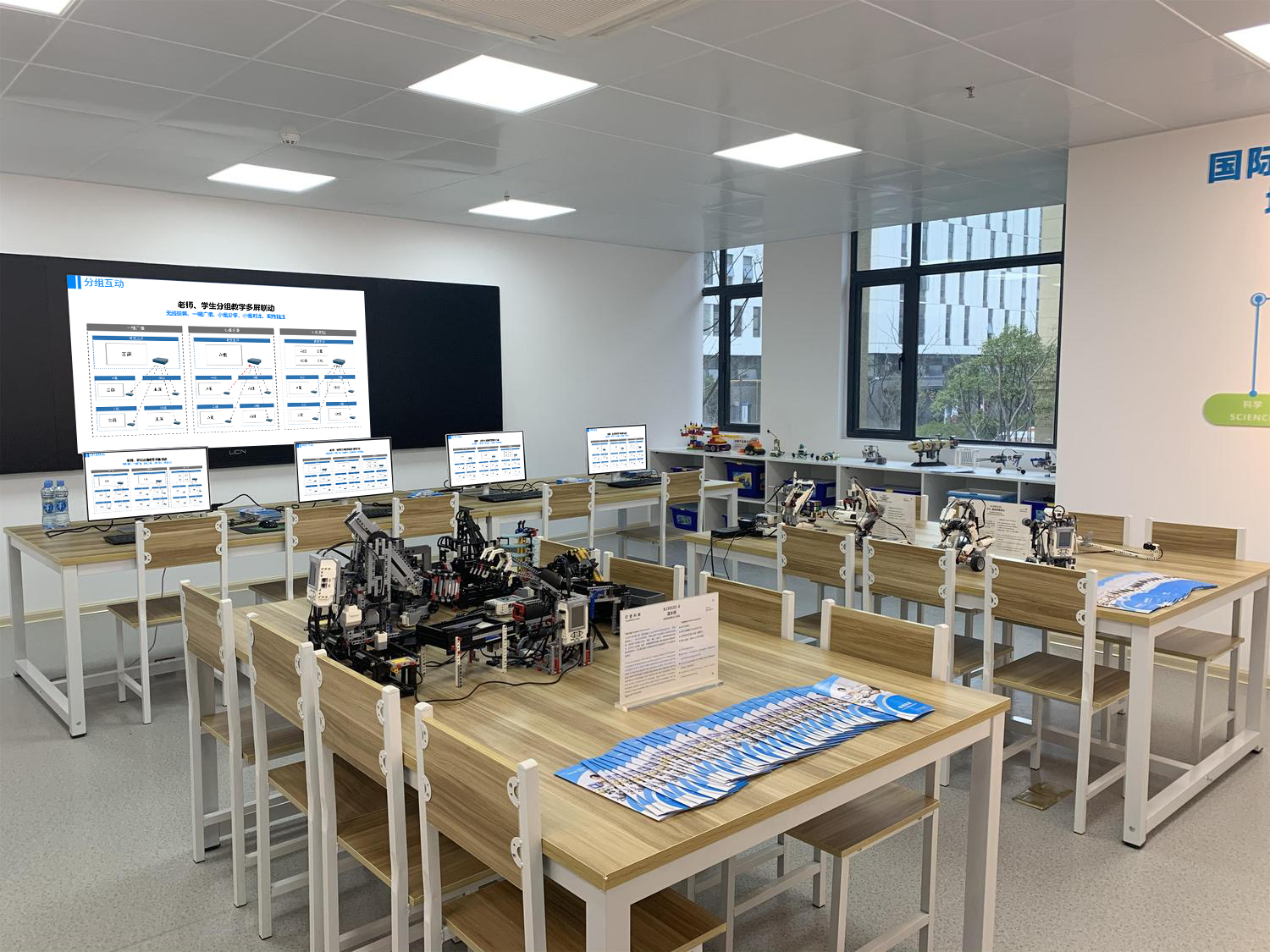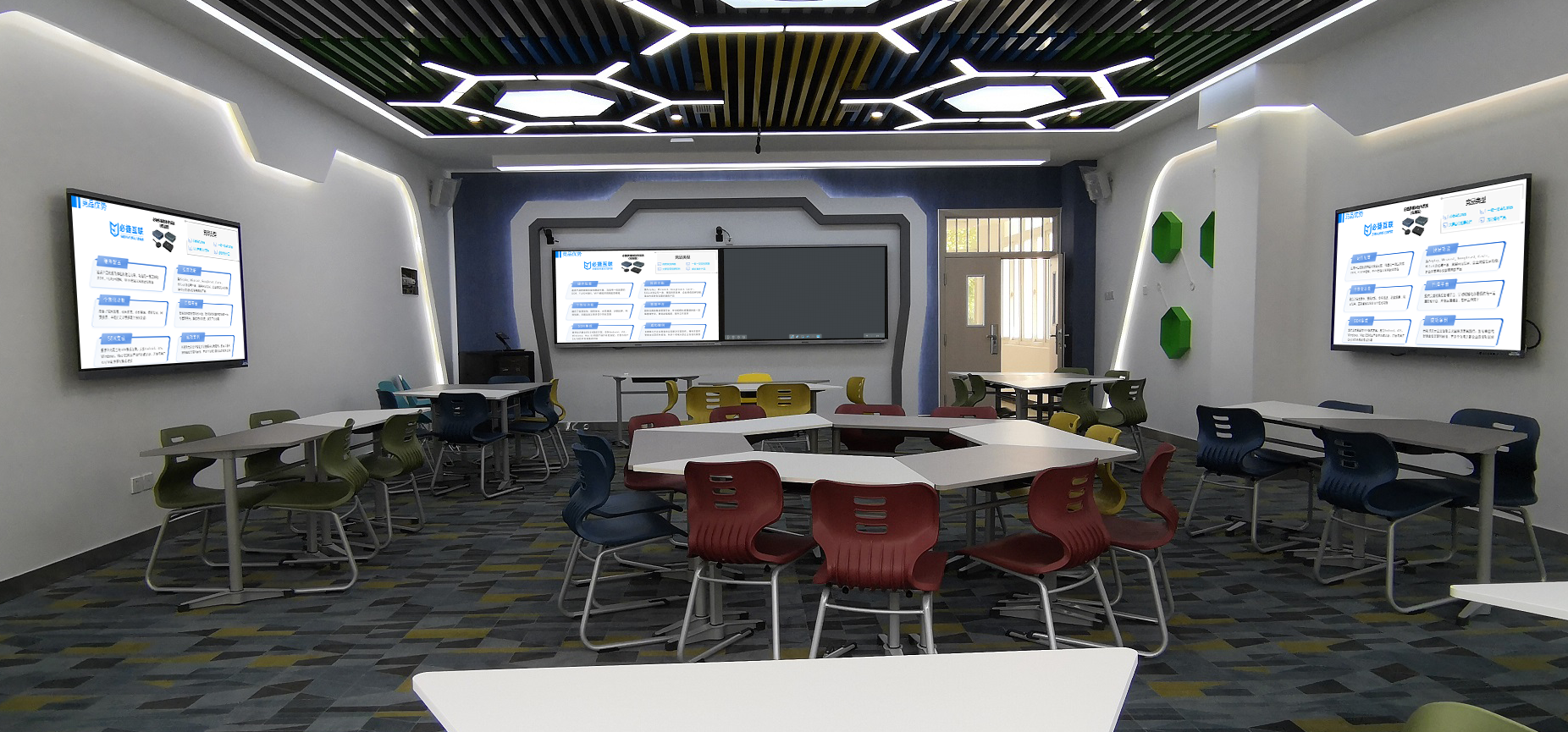Interactive Classrooms: Making Teaching More Natural
The core of an interactive classroom is to break the one-way “teacher talks, students listen” model. A set of devices adapted for teaching scenarios can make teacher-student interaction happen naturally instead of requiring deliberate effort. With flexible screen mirroring and scenario-based function design, courseware, work displays, and real-time feedback can flow more smoothly, covering the entire process before, during, and after class.
Device Linkage: Breaking Down “Device Barriers” to Interaction
The classroom’s large screen, the teacher’s tablet, and students’ devices can be seamlessly linked to form an interactive network without complex setup. A teacher can open courseware on their tablet, and it will automatically mirror to the large screen when they walk near it. If they walk to a student’s desk in the middle of a lecture, the courseware screen can follow them to their tablet for them to continue teaching. Students can film their problem-solving drafts and lab notes with their phones, and with a QR code scan, they can mirror it to their group’s screen or the main screen for the whole class in 3 seconds. Even older phones and devices from different brands can connect stably, with a connection success rate of over 99%.
Once connected, the operation is simple, too. When a teacher circles a key point on the large screen, the mark will be synchronized to the students’ devices. The answers students submit from their devices are automatically compiled on the teacher’s tablet, so there’s no need to collect homework one by one, and the class rhythm is more continuous.
In-Class Interaction: Getting Every Student Involved
Group Discussions Aren’t Clustered
Each group’s small screen supports up to 3 students mirroring their ideas at the same time. One person can mirror a mind map, and another can mirror their steps for solving a problem. When the screens are displayed side by side, there’s no need for the group to pass around a device, and everyone’s ideas are clear at a glance. When a group wants to share with the class, the teacher can tap “Push to Main Screen” on their tablet, and the group’s content will appear on the large screen, making it easy for other students to see and provide targeted commentary.
Real-Time Feedback Isn’t Delayed
After a teacher poses a question, students can submit their answers by scanning a QR code with their phones. A summary of the answers—including the correct rate and common incorrect options—is generated in real time on the main screen, and the teacher can discuss it on the spot. When a common mistake is made, the teacher can mirror a student’s answer page to the large screen and annotate it while explaining, which is much more effective than vaguely saying, “Everyone, pay attention.” When demonstrating a lab procedure, the teacher can use their phone to film the process and mirror it in real time. If a student didn’t see a step clearly, they can call out, “Teacher, a little slower, please,” and the teacher can bring the phone closer to refilm, and the details will instantly become clear on the large screen.
Post-Class Extension: Extending Interaction Beyond the Classroom
The courseware and key points mirrored in class are automatically saved to the class resource library. Students can scan a QR code with their phones to review the content, so they don’t have to worry about not getting all the notes. The teacher can also mirror extra exercises to the classroom’s large screen, and students can do them by scanning a QR code with their phones when they’re in the classroom after class. The teacher’s tablet will receive a notification when an exercise is submitted, and after grading, the teacher can mirror the incorrect questions and explain them in the next class, making the instruction more targeted.
Administrators can check the status of classroom devices in real time via a backend. If a large screen is offline or a mirroring terminal has a problem, they’ll receive an alert on their phone and can adjust it remotely without having to go to the classroom to troubleshoot, ensuring that class interaction doesn’t get stuck.
This solution doesn’t add a “burden” to the classroom; instead, it turns devices into a “bridge” for interaction. Teachers don’t have to learn complicated operations, and students don’t have to worry about not having a chance to express themselves. The “interaction” in an interactive classroom can finally be a reality in every single class.